Samsung Announces 960 PRO And 960 EVO M.2 PCIe SSDs (Updated)
by Billy Tallis on September 21, 2016 12:01 AM EST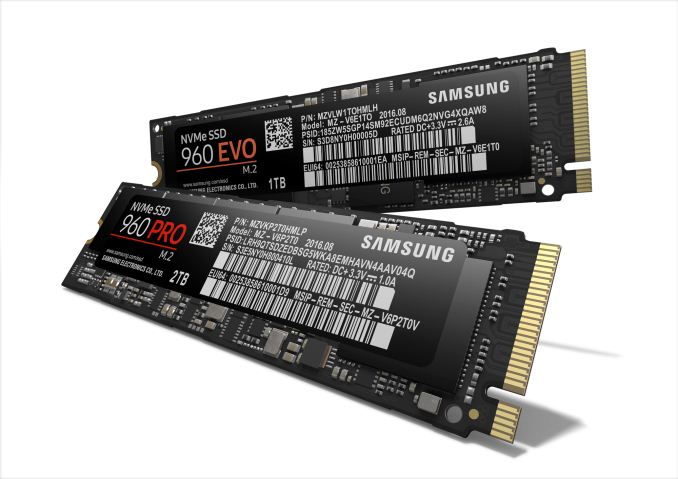
UPDATE: New features unveiled during the presentation and Q&A session are described below.
Here at Samsung's SSD Global Summit in South Korea, the company has just officially unveiled their next generation of M.2 PCIe SSDs. The new 960 PRO SSD is the successor to the 950 PRO, launched at last year's Summit as Samsung's first M.2 PCIe SSD for the retail market. The new 960 EVO introduces a more affordable option based on TLC NAND flash.
Samsung's early M.2 PCIe SSDs were officially OEM-only products. The XP941 was one of the first PCIe SSDs designed for client computing use and used the AHCI protocol that is standard for SATA controllers rather than the newer NVMe protocol. The next generation consisted of the SM951 and PM951 SSDs, which adopted a new controller that supports PCIe 3.0 x4 operation and provides NVMe support as an option. The 950 PRO uses the same controller as the SM951 but introduced Samsung's 3D V-NAND to the product family for the first time.
Earlier this year, Samsung released a new generation of OEM M.2 PCIe SSDs: the SM961 and PM961. These brought V-NAND to the OEM side of the family and introduced a new Samsung "Polaris" SSD controller that allowed for substantial performance improvements. Availability of the SM961 and PM961 through unofficial retail distributors has been extremely limited, but given their performance, demand has been high. The 960 PRO and 960 EVO are Samsung's answer.
| Samsung SSD Comparison | ||||||||
| 960 PRO | 960 EVO | SM961 | PM961 | 950 Pro | SM951- NVMe |
PM951- NVMe |
||
| Form Factor | M.2 2280 | |||||||
| Controller | Samsung Polaris | Samsung Polaris | Samsung UBX | unknown | ||||
| Interface | PCIe 3.0 x4 | |||||||
| Protocol | NVMe | |||||||
| NAND | Samsung 48-layer MLC V-NAND | Samsung 48-layer TLC V-NAND | Samsung MLC NAND | Samsung TLC NAND |
Samsung 32-layer MLC V-NAND | Samsung 16nm MLC | Samsung 16nm TLC | |
| Capacity | 512GB, 1TB, 2TB | 250GB, 500GB, 1TB | 128GB, 256GB, 512GB, 1TB | 128GB, 256GB, 512GB, 1TB | 256GB, 512GB | 128GB, 256GB, 512GB | 128GB, 256GB, 512GB | |
| Sequential Read | 3500 MB/s | 3200 MB/s | 3200 MB/s | 3000 MB/s | 2500 MB/s | 2150 MB/s | 1050 MB/s | |
| Sequential Write | 2100 MB/s | 1900 MB/s | 1800 MB/s | 1150 MB/s | 1500 MB/s | 1550 MB/s | 560 MB/s | |
| 4KB Random Read (QD32) | 440k IOPS | 380k IOPS | 450k IOPS | 360k IOPS | 300k IOPS | 300k IOPS | 250k IOPS | |
| 4KB Random Write (QD32) | 360k IOPS | 360k IOPS | 400k IOPS | 280k IOPS | 110k IOPS | 100k IOPS | 144k IOPS | |
| Launch Date | October 2016 | 2H 2016 | October 2015 | ~June 2015 | 2015 | |||
The 960 PRO is clearly more than just a retail branded edition of the SM961. The largest capacity will be 2TB, compared to 1TB for the SM961 and 512GB for the 950 PRO, and the smallest capacity will be 512GB. The 950 PRO never bothered with a 128GB capacity, and with the addition of the 960 EVO to the lineup, Samsung is most likely retiring the 256GB capacity due to performance limitations. Sequential transfer speeds are significantly higher while random access speeds are slightly lower. Additionally, the 960 PRO shows a power rating of 1.0A at 3.3V, compared to 2.4-2.7A for Samsung's previous M.2 PCIe SSDs. Such a big decrease in maximum power draw is sure to translate to significant savings even in ordinary usage. (Update: this label is probably incorrect, as the presentation cited 5.1W active power for the 512GB 960 PRO, a more modest power saving.) Unfortunately, the warranty is still the 5 years offered on the 950 PRO rather than the 10 years offered for the 850 PRO.
| Samsung 960 PRO Specifications Comparison | ||||||
| 960 PRO 2TB | 960 PRO 1TB | 960 PRO 512GB | 950 PRO 512GB |
950 PRO 256GB |
||
| Form Factor | single-sided M.2 2280 | single-sided M.2 2280 | ||||
| Controller | Samsung Polaris | Samsung UBX | ||||
| Interface | PCIe 3.0 x4 | |||||
| NAND | Samsung 48-layer 256Gb MLC V-NAND | Samsung V-NAND 32-layer 128Gbit MLC | ||||
| Sequential Read | 3500 MB/s | 3500 MB/s | 3500 MB/s | 2500MB/s | 2200MB/s | |
| Sequential Write | 2100 MB/s | 2100 MB/s | 2100 MB/s | 1500MB/s | 900MB/s | |
| 4KB Random Read (QD32) | 440k IOPS | 440k IOPS | 330k IOPS | 300k IOPS | 270k IOPS | |
| 4KB Random Write (QD32) | 360k IOPS | 360k IOPS | 330k IOPS | 110k IOPS | 85k IOPS | |
| Power | 5.8W (average) | 5.3W (average) | 5.1W (average) | 7.0W (burst) 5.7W (average) 1.7W (idle) |
6.4W (burst) 5.1 (average) 1.7W (idle) |
|
| Endurance | 1200TB | 800TB | 400TB | 400TB | 200TB | |
| Warranty | 5 Year | 5 Year | ||||
| Launch MSRP | $1299 | $629 | $329.99 | $350 | $200 | |
As with the 960 PRO, the 960 EVO differs from its OEM counterpart. The capacities are the slightly lower 250GB-1000GB typical of Samsung's EVO SSDs rather than the power of two capacity points used on the PRO and OEM products. Peak sequential write speed is substantially higher than the PM961 and even exceeds the 950 PRO, thanks in part to Samsung's new generation SLC caching technology branded "Intelligent TurboWrite". The rest of the performance specifications are slightly higher than the PM961. There's no 2TB option, but this is purely a business decision rather than a technical limitation.
| Samsung 960 EVO Specifications Comparison | ||||||
| 960 EVO 1TB | 960 EVO 500GB | 960 EVO 250GB | 950 PRO 512GB |
950 PRO 256GB |
||
| Form Factor | single-sided M.2 2280 | single-sided M.2 2280 | ||||
| Controller | Samsung Polaris | Samsung UBX | ||||
| Interface | PCIe 3.0 x4 | |||||
| NAND | Samsung 48-layer 256Gb TLC V-NAND | Samsung V-NAND 32-layer 128Gbit MLC | ||||
| SLC Cache Size | 42GB | 22 GB | 13GB | N/A | ||
| Sequential Read | 3200 MB/s | 3200 MB/s | 3200 MB/s | 2500MB/s | 2200MB/s | |
| Sequential Write (SLC Cache) | 1900 MB/s | 1800 MB/s | 1500 MB/s | 1500MB/s | 900MB/s | |
| Sequential Write (sustained) | 1200 MB/s | 600 MB/s | 300 MB/s | N/A | N/A | |
| 4KB Random Read (QD32) | 380k IOPS | 330k IOPS | 330k IOPS | 300k IOPS | 270k IOPS | |
| 4KB Random Write (QD32) | 360k IOPS | 330k IOPS | 300k IOPS | 110k IOPS | 85k IOPS | |
| Power | 5.7W (average) | 5.4W (average) | 5.3W (average) | 7.0W (burst) 5.7W (average) 1.7W (idle) |
6.4W (burst) 5.1 (average) 1.7W (idle) |
|
| Endurance | 400TB | 200TB | 100TB | 400TB | 200TB | |
| Warranty | 3 Year | 5 Year | ||||
| Launch MSRP | $479 | $249 | $129.88 | $350 | $200 | |
Samsung has had a bit of a rough year with the transition to their 48-layer V-NAND: the promised 1TB 950 PRO never materialized and other products using the 48-layer V-NAND have been late or also failed to show up. Fortunately, Samsung's SSD controller technology hasn't faltered and their competitors have been slow to catch up. With the launch of the 960 PRO and 960 EVO, Samsung is putting most of those troubles behind them and they will probably resume dominating the SSD market while making it look easy.
Updates:
Samsung's Polaris SSD controller is a five-core chip, compared to the three-core design of the UBX controller used by the 950 PRO. One of the 5 cores on the Polaris controller is dedicated for host communication, while the remaining four cores are used for flash management. For the 2TB 960 PRO, the DRAM is stacked on top of the controller in a Package-On-Package configuration to free up PCB space for a total of four NAND packages.
Samsung has taken several measures to reduce the incidence of thermal throttling with the 960s, resulting in the 960 PRO lasting 50% longer before throttling on a sequential read test (and due to the increased performance, it transfers more than twice the data before throttling). Most of the improvement comes from increased power efficiency, but in addition, the 960 PRO and EVO include a heatspreader of sorts on the back side. The adhesive label includes a thin layer of copper. One Samsung engineer estimated that this sticker accounts for about 30% of the improved thermal performance.
Samsung also previewed the next version of their Magician software, which is getting a user interface overhaul and a few new features. One of the more interesting features is a secure file erase capability. Using a proprietary extension to the NVMe command set, the Magician software will be able to issue what is essentially a mandatory block erase command (whereas TRIM is a hint the drive is free to ignore or delay acting upon). Samsung was unclear on the exact mechanism for eradicating the specified data; we're not sure if it is simply erasing the data or actually overwriting it while bypassing the wear leveling mechanism, and it is unclear what happens to any lingering data in the SSD's spare area that is from previous versions of the file. In the long run, this kind of capability will be very well received in certain government and corporate environments where it will be very handy to be able to eradicate sensitive data without wiping the whole drive, but for now this is more of a novelty feature that is being tested in the consumer market before it can acquire the necessary certifications.


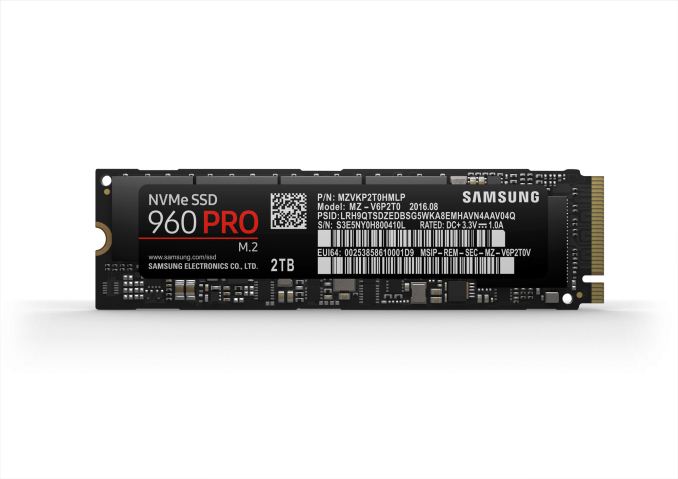
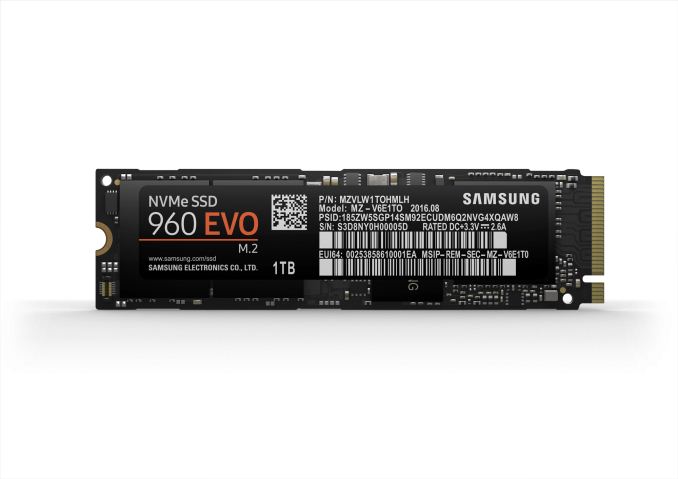
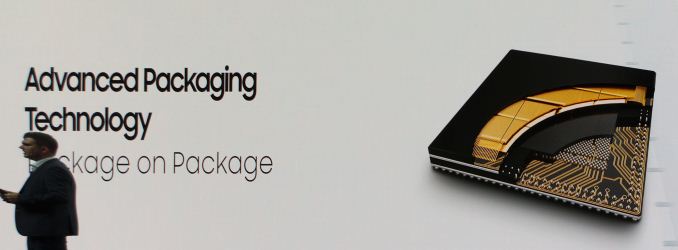


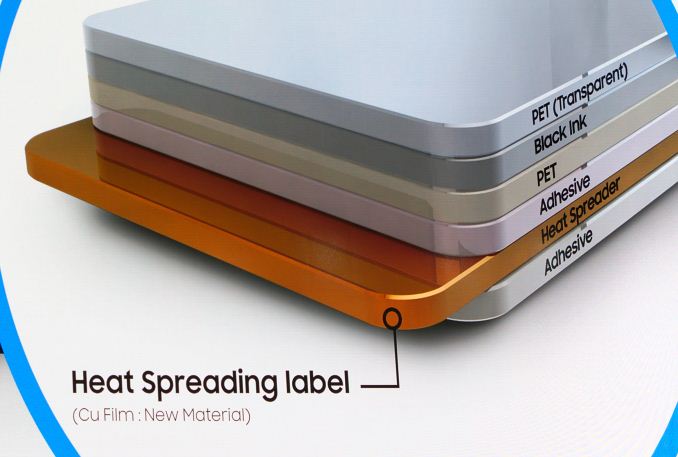








134 Comments
View All Comments
Magichands8 - Wednesday, September 21, 2016 - link
This whole product is nothing but a pony show for their new tech. It's just a shame they're trying it in products that aren't worth buying. The prices per GB are ridiculous and while the performance isn't too bad the form factor is a no-go from the beginning. It's been years since any SSDs have been released that are worth buying unless your current system is failing and you desperately need something immediately.eek2121 - Wednesday, September 21, 2016 - link
Speak for yourself, some of us actually have workloads that will take advantage of the speed. The price per gb isn't bad given that they are a market leader and the only company with such a product on the market.Bullwinkle J Moose - Wednesday, September 21, 2016 - link
Moving forward, "Internal Throughput" will be the deciding factor in how fast an SSD feelsReading and writing large data sets simultaneously will become VERY important with interactive VR Games at insanely high resolutions as well as media production
ATI overcomes the internal throughput problem by placing "TWO" SSDs on a single graphics card
One SSD for reading and one for writing simultaneously
A Samsung 850 Pro (256GB) feels considerably faster than a Samsung 840 Pro (256GB) when running Windows XP from a SATA2 Port even though BOTH drives have about the same specs on a faster SATA3 port
The reason is that the 850 Pro can copy and paste a 2GB file FROM the 850 Pro TO the same drive at twice the speed of an 840 Pro
Even using the ancient IDE protocol on a SATA2 port, the 850 will copy/paste a 2GB file in 18 seconds (or 113.7MB/sec)
The same protocol using an 840 Pro results in a 38 second copy/paste time for the same file (or 56.8MB/sec Best recorded time)
For an indicator of how far we have come....
A 1st Gen OCZ Vertex 1 (30GB Drive) will copy/paste the same file at 3.7MB/sec
INTERNAL throughput is a completely different animal than the specs you will find for any SSD on the Internet
caching will give you much better copy/paste number on the second try so be sure to reboot between tests
ANAND TESTERS>
Start providing internal throughput numbers because any 2 drives with the same (external) specs won't tell you anything about how fast the drive feels with a complex workload
Billy Tallis - Friday, September 23, 2016 - link
If you read any of our SSD reviews you'll find that we do measure how SSDs perform on workloads that have a mix of reads and writes. Our current test suite includes mixed read/write tests of both sequential and random I/O and of varying proportions of reads vs writes. It's not clear to me that you're asking for anything we don't already provide, but your term "internal throughput" seems to be an incorrect way to describe it: operations like file copies are carried out by issuing read and write commands that transfer data to and from system RAM. The ATA and NVMe command sets don't include a "copy" operation.Bullwinkle J Moose - Friday, September 23, 2016 - link
I HAVE read your reviews and you DID NOT test what I am describingYour reviews do NOT indicate how fast a large file can be copied and pasted to the same drive
Your reviews indicate the thoughput TO and FROM the drive
My data is accurate
If Your data does not indicate that the 850 Pro is twice as fast as the 840 Pro under the conditions I set in my original post, then your doing it wrong and your data is not accurate
How fast can you copy and paste a 20 GB file from an 850 Pro to the same drive?
What was the protocol?
What OS?
What type of SATA Port?
I do not see any of this in your reviews
Please show me actual numbers for the test I describe
If your numbers are the same, your OS is at fault!
Please Retest!
Bullwinkle J Moose - Wednesday, September 21, 2016 - link
Moving forward, "Internal Throughput" will be the deciding factor in how fast an SSD feelsReading and writing large data sets simultaneously will become VERY important with interactive VR Games at insanely high resolutions as well as media production
ATI overcomes the internal throughput problem by placing "TWO" SSDs on a single graphics card
One SSD for reading and one for writing simultaneously
A Samsung 850 Pro (256GB) feels considerably faster than a Samsung 840 Pro (256GB) when running Windows XP from a SATA2 Port even though BOTH drives have about the same specs on a faster SATA3 port
The reason is that the 850 Pro can copy and paste a 2GB file FROM the 850 Pro TO the same drive at twice the speed of an 840 Pro
Even using the ancient IDE protocol on a SATA2 port, the 850 will copy/paste a 2GB file in 18 seconds (or 113.7MB/sec)
The same protocol using an 840 Pro results in a 38 second copy/paste time for the same file (or 56.8MB/sec Best recorded time)
For an indicator of how far we have come....
A 1st Gen OCZ Vertex 1 (30GB Drive) will copy/paste the same file at 3.7MB/sec
INTERNAL throughput is a completely different animal than the specs you will find for any SSD on the Internet
caching will give you much better copy/paste number on the second try so be sure to reboot between tests
ANAND TESTERS>
Start providing internal throughput numbers because any 2 drives with the same (external) specs won't tell you anything about how fast the drive feels with a complex workload
Bullwinkle J Moose - Wednesday, September 21, 2016 - link
sorry double postIn case you were wondering about the ancient OS / IDE protocol or SATA2 references, I torture all my SSD's and thumb drives in worst case scenarios
Any of my drives that survive several Complete wipes using KILLDISK, Heavy defragging sessions, an OS that does not support TRIM, misaligned partitions etc/etc/etc, then I will trust my data with that drive
Any drive that dies within the 30-day return policy, well, I never buy THAT brand ever again
If your data is important to YOU, you already should know what I mean
mkaibear - Thursday, September 22, 2016 - link
If your data is truly important to you you don't care what drives you end up using because it's duplicated across so many that it doesn't matter.Torture testing drives to make yourself feel better doesn't make your data more secure.
Unless you have a particular use case which requires only a single drive to ever be used (of which there are few) then you're just wasting time and effort there.
Bullwinkle J Moose - Thursday, September 22, 2016 - link
I did not invent Application and Game Streaming to simply secure my DataI am the Real Bullwinkle (not the fake Identity thief with a Disqus account)
I am not testing to simply make myself feel better
I am advancing the technology
Reading extremely High bitrate Videos While editing AND saving to disk simultaneously require the state of the art to advance far beyond your simple needs reading fast "OR" writing fast but not doing both simultaneously
4-8K 3D requirements will far exceed the limitations of current tech
If Microsoft, Adobe, Valve, and all the other big companies are taking my advice in 3D as well as Application and Game Streaming, then I must be doing SOMETHING right
RIGHT?
Bullwinkle J Moose - Thursday, September 22, 2016 - link
and Lets not forget NVidia or ATIThey LOVE my work in Application and GameStreaming